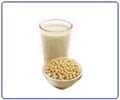Patients with type 1 diabetes and type 2 diabetes can effectively control their blood glucose levels by following a low glycemic index diet, according to a new study.
During the study, the reviewers found that blood glucose levels decreased by 0.5 percent with a low GI diet."The glycemic index (GI) is a way of ranking foods, particularly carbohydrates, according to how quickly they affect the blood glucose levels in the body when they are eaten," said lead review author Diana Thomas.
The researchers reviewed 11 randomised controlled trials of either low GI or low glycemic load (GL) diets, with interventions lasting between four weeks and 12 months. The studies comprised 402 participants.
The highest GI is 100, based on consuming foods like white bread or straight glucose, according to the American Diabetes Association.
Low GI foods have a score of 55 or less. Glycemic load is a combined measure that takes into account the amount of carbohydrate in a food, as well as its GI score, and represents the overall glycemic effect of the diet.
"The participants were adults in most studies; however, there were two studies in children, all of whom had type 1 diabetes," Thomas said.
Advertisement
Thomas said that the point for people "is to lower the GI or GL of the diet, rather than to follow specific diet plans, which over the longer term can be very difficult to maintain."
Advertisement
The review appears in The Cochrane Library, a publication of The Cochrane Collaboration.
Source-ANI
SRM















